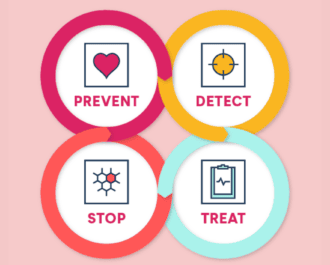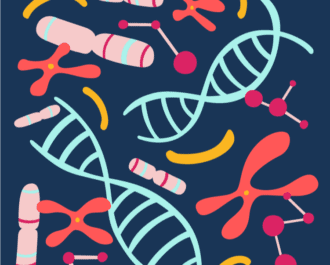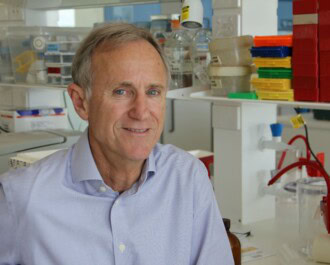
Mammography is the primary diagnostic tool for detecting breast cancer with 800,000 women screened in Australia each year, and NBCF is funding an education tool that helps radiologists improve their accuracy when reading mammograms.
The BreastScreen Reader Assessment Strategy (BREAST) was launched in 2010 by Professor Patrick Brennan and Professor Warwick Lee from University of Sydney, in conjunction with BreastScreen Australia.
BREAST is an online test that evaluates the performance of radiologists reading digital breast X-rays from mammograms, to identify the reasons why errors in detection occur and to create innovative solutions to reduce errors in the clinic.
Prof Brennan says that clinicians (radiologists, breast physicians, registrars) who train on BREAST, combined with a BreastScreen program that ensures mammograms are read at least twice, has increased accuracy in correctly identifying the presence of tumours on digital scans by 34 per cent.
“There’s definitely skill and experience required to accurately read mammograms. They’re in black and white and often have a lot of white areas that could be tumours, or not. It’s not just about spotting tumours, but knowing if a dense area of tissue is cancerous, and those decisions make a huge difference to women’s lives.
“Thankfully, there’s a huge amount of goodwill among the radiology community for BREAST and a strong desire to improve accuracy in the clinic so women aren’t called back unnecessarily, and tumours aren’t missed.
“Around 90 per cent of radiologists have voluntarily taken the free test at least once in the last three years. They can take it as often as they want and many do,” says Prof Brennan.
An important element of the test is the immediate feedback function that provides readers with their results and allows them to review their answers compared with the ‘truth’ to see where they made errors.
The importance of the tests have gained widespread support and the BREAST platform has become an accepted training tool to help define and set standards of performance among clinicians and radiologists, and directly supports BreastScreen Australia and New Zealand’s quality assurance activities.
The powerful software behind the tests underpins the second purpose of BREAST, which is to be a rich data resource for research. For example, a function that tracks eye movement and zooming activity on while radiologists read screening mammograms helps determine if a reader has seen the tumour but dismissed it. This information can help the developers understand if there are tumour types that are harder for clinicians to identify and then develop specific tests to address these gaps.
The wealth of data being generated on an international scope also provides a platform for additional research projects, such as another NBCF-funded project aimed at optimising the accuracy of tumour detection through double-reading of scans. Having at least two radiologists from different locations read the same scan improves the likelihood that the tumour will be picked-up correctly and reduce the number of women who are called back for second mammograms.
More News Articles
View all News


